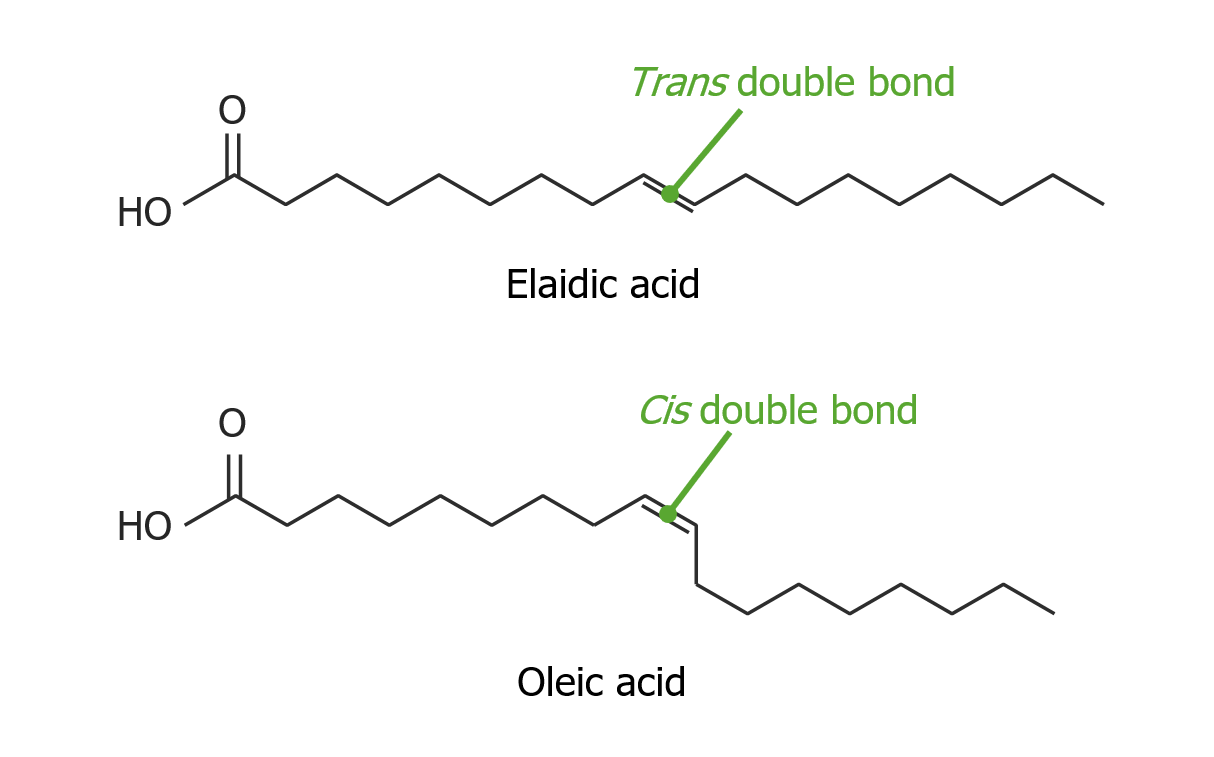Playlist
Show Playlist
Hide Playlist
Phospholipids
-
Slides 05 MacromoleculesII CellBiology.pdf
-
Reference List Molecular and Cell Biology.pdf
-
Download Lecture Overview
00:01 So it turns out that there’s one more lipid that we need to pay attention to with particular detail because it’s a critical component of all cell membranes. 00:09 It’s the phospholipid. 00:11 The phospholipid is very similar to a triglyceride. 00:14 Even in these fatty acid tails could be kinky or they could be straight. 00:19 We have a glycerol and then, we have our fatty acid tails. 00:24 But in addition, we have a substitution for the other fatty acid tail that we see in a triglyceride, we now have a choline and a phosphate group added on. 00:36 So what happens here is we have the head region which is polar and it is hydrophilic. 00:44 It’s because it’s polar, you recall water is a polar molecule, the water and the hydrophilic head of the phospholipid like to be together and then the non-polar tails, their fatty acid tails, there’s no polarity in there, they are hydrophobic which means they are water hating, phobic, they don’t like water. 01:07 And so they want to stay away from water as much as possible. 01:11 And so we have a couple of neat formations that happen because of this. 01:15 Before we go on, we’re going to change our notation a little bit. 01:20 First of all, you can see, there’s a number of different ways that we might depict our phospholipids. 01:25 The one all the way over on the right is the one that we’ll pretty much see from now on out where we have the hydrophilic head and then we’ll have the hydrophobic tails. 01:36 So the neat thing about phospholipids is if you were to put a few in a jar of water and shake it up, you would see that they would make this micelle formation in which they hide the hydrophobic tails away from the water, and the hydrophilic heads act to kind of protect those. 01:54 Now, there’s movement between them but they in general will hold this micelle formation and it’s this micelle formation that actually, our detergents take advantage of so that we can hide little packets of grease inside with the hydrophobic tails and get them away from our dishes. 02:10 Now, another formation that we might see or in fact we do see a lot is the phospholipid bilayer. 02:17 It’s less likely to happen when you shake up some phospholipids in a jar but it happens all the time in nature to form cell membranes as well as some of the cell organelles. 02:27 So we’ll see that the hydrophobic tails go in towards each other and that’s because of the nature of the cellular environment. 02:35 We have an aqueous environment, the tails don’t like water so they associate with each other and then, the phospholipid heads which are hydrophilic are okay with being near the water. 02:47 So all membranes are composed of this phospholipid bilayer. 02:53 We’ll have some endomembrane organelles that we’ll look at in the future and even the nucleus is bound with phospholipid bilayers. 03:01 So in conclusion, in this lesson, we should have learned how to describe the four levels of protein structure as well as explain how nucleotides come together to form DNA and RNA molecules with a specific attention on that three prime and five prime thing. 03:21 In addition, we are able to now discuss the major classes of phospholipids and perhaps, you’ll even be able to explain to your friends why butter is a much better choice than margarine. 03:33 So thank you so much for watching and I look forward to seeing you in our next lecture where we’re going to explore membranes in much more detail.
About the Lecture
The lecture Phospholipids by Georgina Cornwall, PhD is from the course The Macromolecules of Life.
Included Quiz Questions
Which statement best describes the monomers of a lipid?
- Lipids are nonpolymer macromolecules.
- Glycerol
- Fatty acids
- Hydrocarbons
- Nucleotides
Why are phospholipids amphipathic molecules?
- Due to the presence of a hydrophilic head and a hydrophobic tail in the same molecule
- Due to the presence of hydrophilic tail and head structures in the same molecule
- Due to the presence of a hydrophobic head and a hydrophobic tail in the same molecule
- Due to the presence of a hydrophobic head and a hydrophilic tail in the same molecule
- Due to the presence of a neutral tail and a hydrophilic head in the same molecule
Which of the following best describes a micelle?
- A sphere of phospholipids with outward-facing hydrophilic heads that protect the inward-facing hydrophobic tails
- A phospholipid bilayer in which hydrophobic tails face each other and hydrophilic heads are away from each other
- Proteins that help denatured proteins refold to the correct configuration
- A double-stranded set of nucleic acids bonded in an antiparallel fashion
- A protein/RNA complex that helps translate RNA into proteins
Customer reviews
4,8 of 5 stars
| 5 Stars |
|
4 |
| 4 Stars |
|
1 |
| 3 Stars |
|
0 |
| 2 Stars |
|
0 |
| 1 Star |
|
0 |
After watching her lectures on molecular and cellular biology, I had a wider view of these subjects. Well integrated, well explained, excelent service!
Love your lectures, Professor. It is helping me a lot reviewing Biology as It's been years since my basic science years.
She talks so clear, understandable.. just a little fast but i havent got bored.. Thank you..
informative. good review for this basic area as it has clinical correlations




